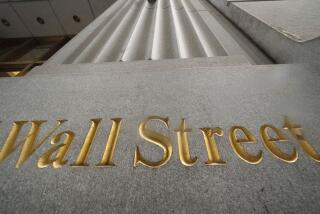Japan Had Economy --and Its Image--in Mind as It Cut Rate
TOKYO — After two years of pursuing a tight money policy that has dragged down stock prices, put a lid on spiraling land prices and substantially cut Japan’s role as a source of plentiful capital to the world, Japanese monetary authorities are beginning to ease up.
The Bank of Japan on Monday lowered its discount rate by half a percentage point to 5.5%, the first rate cut in 4 1/2 years. The move came after the Ministry of Finance removed its “window guidance” advising banks to be conservative in their lending decisions.
Observers say the move was designed to help keep Japan’s economy expanding so that lagging imports do not once again create huge trade surpluses that will subject the nation to criticism.
The rate cut also addresses concerns of small businesses and financial institutions that have been hurt by high interest rates. Bankruptcy rates have soared for small and medium-size companies, banks have seen their bad loan levels balloon and securities companies have seen their earnings plummet.
Bank of Japan Governor Yasushi Mieno took the economy “to the edge and ran the risk of moving from a boom to a bust,” said Kenneth S. Courtis, chief economist at Deutsche Bank Group’s Tokyo office. Courtis, who expects another rate cut at year-end, said the lower interest rates will help prevent the economy from moving into a full recession.
Although Japan’s economy grew at an astounding 11.4% in the January to March period, economists say the bulk of that growth has come from exports. The domestic economy grew at an annualized rate of just 2.9%, with two-thirds of that growth accounted for by capital investments.
Although the numbers aren’t in yet for the quarter ended June 30, early indications are that the Japanese economy may have actually shrunk moderately compared to the first quarter. May housing starts were down a sharp 18.6% from the year before, while car sales in June were down 8.3%.
With Japanese corporations paying 8.4% to borrow money when the return they can expect on such investments as building new factories is only 4.6%, there is a strong likelihood of a sudden plunge in investments, Courtis said.
The central bank began to tighten credit in May, 1989, when it was clear that two years of low interest rates had created what the Japanese now call the “bubble economy,” asset inflation fueled by speculation. But it was Mieno, who took over in December, 1989, who immediately began a series of interest rate hikes in a relentless drive to squeeze speculators out of the economy.
Mieno’s interest rate hikes and pronouncements that land prices should come down substantially set stock prices plummeting throughout 1990 and forced into the open a spate of scandals involving speculative investments in stocks, real estate and art (what Japanese now call real estate that you can hang on the wall.)
The heads of Nomura Securities and Nikko Securities resigned last week after admitting they loaned hundreds of millions of dollars to a gangster to buy stocks the securities firms later pushed. The two firms also spent hundreds of millions more to cover the stock market losses of large customers. Mieno’s policies also put a halt to the massive flow of money going overseas by making it more difficult for corporations and individuals to borrow money--using land and stocks as collateral--to make the investments. The decrease in overseas investments contributed to depressed real estate markets in Los Angeles and other cities where Japanese money had played a key role.
Nobody expects a quick resumption in Japan’s overseas spending. Banks must hold down their asset levels to meet new international regulations that require banks to maintain a minimum capital level to back up their loans. And while stock prices have come up moderately, they are still sharply down from their 1989 high.
The main beneficiaries of the central bank move will be the housing sector and small- and medium-size companies, said Toshiki Tomita, senior economist at Nomura Research Institute.
Japan’s GNP Gross national product in trillions of U.S. dollars ‘86: $2.68 ‘87: $2.84 ‘88: $2.97 ‘89*: $2.78 ‘90: $3.19 Source: Organization for Economic Cooperation and Development
More to Read
Sign up for Essential California
The most important California stories and recommendations in your inbox every morning.
You may occasionally receive promotional content from the Los Angeles Times.










